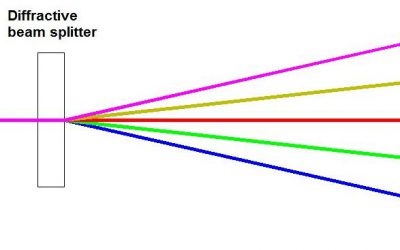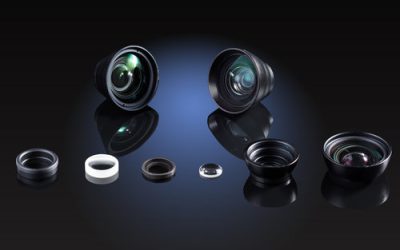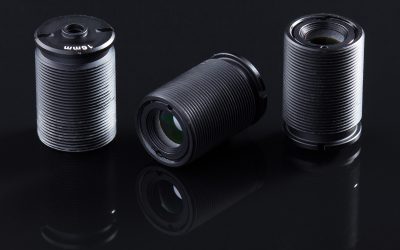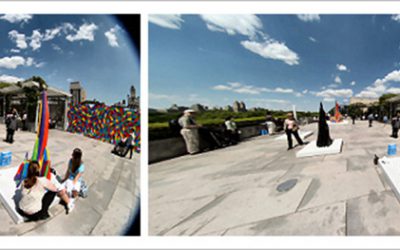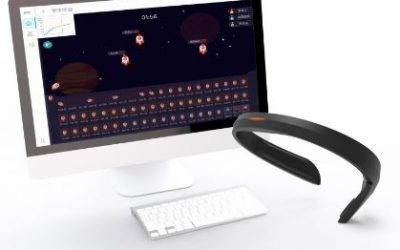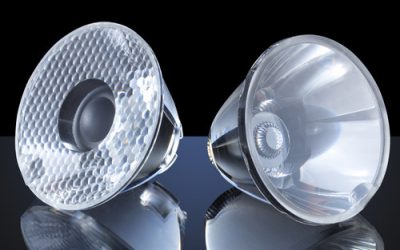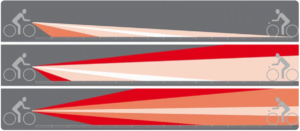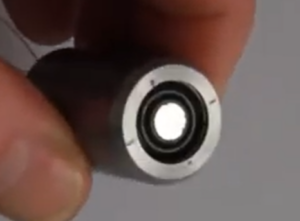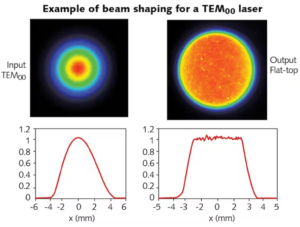Diffractive beam splitters A diffractive beam splitter is a diffractive optical element (DOE) used to split a single collimated laser beam into several beams with the same optical characteristics as the original beam. Beams are usually separated into 1D or 2D arrays...
Blog
Variable spot size + color mixing optical system
by AnatoliTrafimuk | illumination, optical design
In applications such as concert show lighting, architectural lighting, and cinema projection, good color mixing is essential. The optics design in front of a RGBW LED source must include optimization for color uniformity as well as beam shape. A common solution is to...
What are a ‘typical’ steps in lens design ?
by John | lens design, optical design
Overview OFH works on many different types of projects, each with its unique goals and deliverables. For illustration, here is a breakdown of a lens design project from 2012. Our client produced a very low cost diagnostic microscope to view saliva with 30x...
Can your lens vendor test your lens?
by John | lens design
Selecting the right lens manufacturing vendor is a multi step process. To start, you will need detailed production drawings to ensure the vendor understands what you require and the tolerances involved.. As you get quotes, you may find qualified suppliers with good...
Mastering Optical Invariants: Key Principles in Optical System Design
by VasiliKarneichyk | optics definitions
Introduction Optical invariants serve as invaluable mathematical representations encapsulating various optical parameters within an optical system. Despite the dynamic nature of optical components, these invariants remain constant, providing a stable foundation amidst...
Hiring a lens designer
by John | lens design consulting
Planning to hire a lens design partner to assist with your optical engineering program? Here are a few things to consider. Do you need a lens for illumination or for imaging? The design methods and software tools used for illumination and imaging are different. Many...
Object tracking with OpenMV
by John | machine vision
We’ve been experimenting recently with our OpenMV camera and tools. In this video, you can see a simple system to track objects. Building this cost just $80 for the camera and a few hours’ time of coding and testing. In addition to a cellphone backlight , we were able...
How much does a custom lens cost?
by John | lens design, optical design
Updated June 2020. A straightforward question, with no direct answer. The price of lenses depends on the design complexity, material, manufacturing process, and production series size. A mass-produced lens, made from injection-molded plastic at volume 500,000 units,...
An Overview of Wide-Angle Lens Projections
by VasiliKarneichyk | lens design, optical design
There are two primary methods of image formation in lens design. Perspective projection (F-Tan Theta lenses also called Rectilinear or Orthoscopic). Equidistant projection (F-Theta lenses also called Equiangular) The Perspective projection method is most often used...
Simple system for laser speckle reduction
by John | Uncategorized
As the use of lasers grows in application areas such as 3D depth mapping and laser cinema, a fundamental property of lasers called laser speckle has taken on greater importance. Many companies have launched to commercialize new approaches for reducing speckle noise....
Reducing speckle noise in 3D mapping
by John | machine vision, optical design
Laser sources are typically used in 3D depth mapping of random and pseudo-random pattern projectors. This is because laser sources are coherent enough to diffract through a diffractive optical element (DOE), unlike non-coherent sources (LED), which can't. The downside...
Simple optical device for defect detection
by John | machine vision
In industrial applications (including automotive and aviation), small manufacturing defects can lead to expensive or catastrophic failures. Manufacturers rely on human inspection or costly and complex optical systems hardware to detect such defects. Recent advances in...
Making LIDAR cheaper
by John | Uncategorized
LiDAR is an essential enabling tech for dozens of robot applications. To build them, 3D maps sensors are used to collect pulsed light reflected off a target. The return time and wavelength changes allow 3D object imaging. To date, LiDAR’s prohibitive costs and...
Innovators in robotics
by John | Uncategorized
Here is a quick sampling of local innovative robotics and tech companies that have us woo-hooing. Need help? Click here to learn more about our custom optical engineering services. For those of you bent on bending a spoon with your mind, you might...
In the eyes of the beholder: strides in computer intelligence
by John | Uncategorized
Computer vision modeling has relied on using images broken down into various shapes and colors. This however fails to correctly identify familiar objects when in variations of the model. Say a curled up cat or a dog with a Santa hat.In her 2015 TED talk,...
10 suppliers of off-the-shelf lenses
by John | Uncategorized
In certain projects, the best lens design choice is not to design. While high volume production costs savings for a custom design are considerable, there are times when delivery time requirements don't permit the use of a custom design, or when an existing lens used...
5 best materials for LED illumination optics
by AnatoliTrafimuk | illumination, lens design
Updated July 2020. Freeform lenses (including TIR lenses) and lightpipes are the two most common types of LED illumination optics. They can be made using injection molding and are affordable. Glass materials are not common for general illumination, but are used for...
Difficulty of optical requirements for roadway lighting, ranked
by AnatoliTrafimuk | lens design, optical design
All roadway lamps must be designed according to specific standards. The most popular ones are a US standard called "IESNA RP 8-00 Roadway lightning" and a European one called "CIE 140-2000 Road lighting calculations". In the case of CIE 140-2000, the standard only...
Build your own portable polariscope
by John | Uncategorized
We built our own device to look for polarization in materials. Below we explain how to make your own. Find the leads that power the screen backlight. Solder an old USB cable to the leads. 3-5 volts are required Cut the polarizer off an old cell phone, laptop or LCD...
Distinctive design features of infrared optical systems
by SergeySidorovich | Uncategorized
A designer of an IR optical system needs to account for key specifications that greatly impact the complexity of the device construction and its production cost. The most important requirements are described below. The maximum achievable theoretical resolution in...
